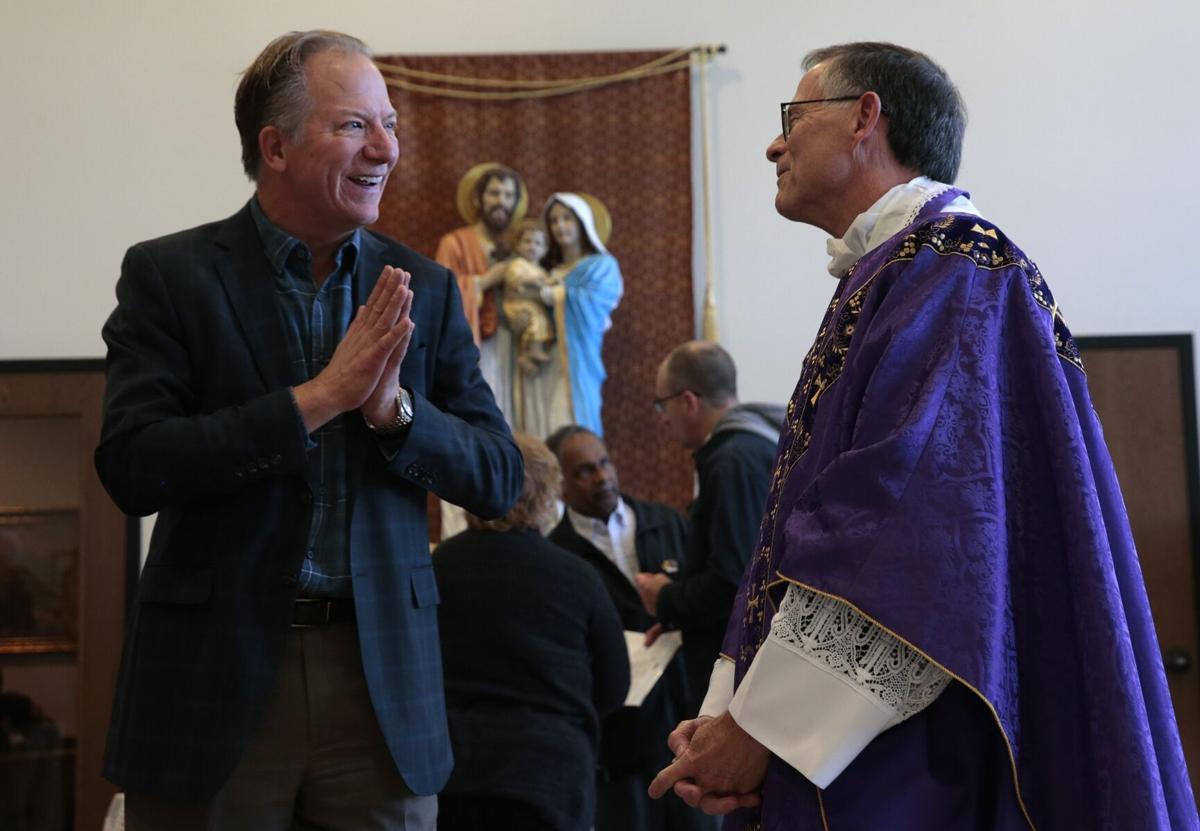A group of 3,100 Catholics has asked the Archdiocese of 51║┌┴Ž to suspend a reorganization plan that could lead to the mergers or closures of dozens of parishes across the region.
ŌĆ£We do not see how the pastoral plan will improve the pastoral care of the Faithful, encourage vocations, increase the evangelizing mission of the Church, revitalize parishes or bring advantage to the Church, reads a March 27 letter from former state Sen. Bob Onder, R-Lake Saint Louis, to Archbishop Mitchell Rozanski.
Onder is serving as the procurator, or representative, of the laity under church canon law for the group Save Our 51║┌┴Ž Parishes. More than 3,100 Catholics from at least 120 parishes signed a ŌĆ£procurator mandateŌĆØ in protest of large-scale parish mergers and in preparation for appeals all the way to the Vatican.
Rozanski is expected to announce the final restructuring plan called ŌĆ£All Things NewŌĆØ by May 28, Pentecost Sunday. The plan is aimed at consolidating resources for a dwindling number of registered Catholics and the priests who serve them across the archdiocese, which includes 178 parishes in 51║┌┴Ž city and 10 surrounding counties.
People are also reading…
The number of signed mandates in opposition to ŌĆ£All Things NewŌĆØ represents fewer than 1% of the estimated 484,000 Catholics in the archdiocese.
In his letter, Onder criticizes the archdioceseŌĆÖs hiring of the Pennsylvania-based Catholic Leadership Institute to coordinate the plan first announced in January 2022. Since then, the group has overseen multiple surveys and about 350 listening sessions that reached every parish.
The surveys were too generic for a diocese as geographically and economically diverse as 51║┌┴Ž, according to Onder.
ŌĆ£There is no indication in the materials provided by CLI that the metric is intended for use in making pastoral planning decisions affecting all the parishes of a diocese, particularly one with the size and diversity of 51║┌┴Ž,ŌĆØ the letter reads.
Onder said requests to meet with archdiocesan leaders have been ignored.
ŌĆ£I have personally spoken with Catholics and been present in many meetings with hundreds of the Faithful expressing upset over the neglect they are experiencing in this process. Yet, decisions will be made that deeply impact their lives of Faith. The experience is scandalous to them, and only breeds mistrust toward Church authorities,ŌĆØ Onder wrote.
Local church leaders have held focus groups and hosted one-on-one and small-group meetings with parishioners, said the Rev. Chris Martin, vicar for strategic planning for the archdiocese. About 70,000 parishioners completed an initial survey and another 18,000 filled out an education survey for parish school communities.
The archdiocese also released financial, demographic and sacramental data on every parish as part of the planning process. With about 200 active diocesan priests ŌĆö including more than a third who are 65 or older ŌĆö the number of parishes is expected to outnumber priests by 2026.
A plan to reassign a significant number of priests this spring was also mentioned as a concern in OnderŌĆÖs letter.
ŌĆ£Changing pastors on so many parishes will only increase that mistrust and the number of souls lost. It will have a negative impact on pastoral care and prove a significant disadvantage to the Church and her Mission,ŌĆØ reads the letter.
New draft models released in February from across the archdiocese show 88 ŌĆ£pastoratesŌĆØ ŌĆö groupings of one or more parishes under a single pastor. Under the proposal, four out of five parishes are slated for mergers or closures.
ŌĆ£From the very beginning of All Things New we have been asking the question, ŌĆśWhich communities does it make most sense to have come together in light of demographic shifts, evangelization and social outreach efforts, resources, and priest availability?ŌĆÖŌĆØ Martin said in a statement Monday. ŌĆ£As outlined in the All Things New process, Archbishop Rozanski has begun his discernment phase and will review the data collected before making his decisions and sharing them publicly on Pentecost.ŌĆØ
The 51║┌┴Ž Archdiocese says it must close churches in the area in order to meet the needs of a changing congregation of Roman Catholics.




















